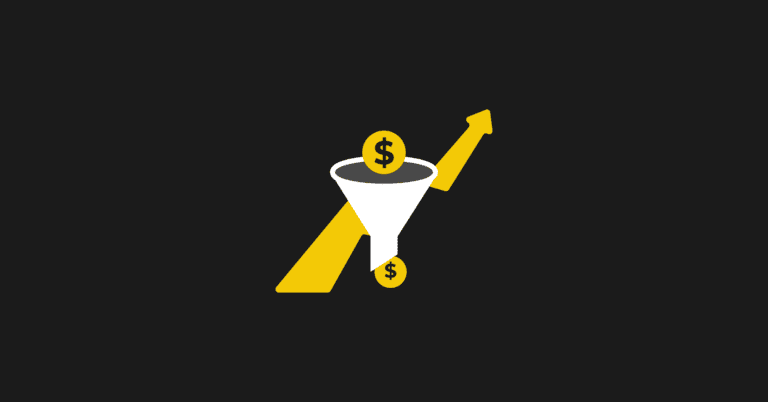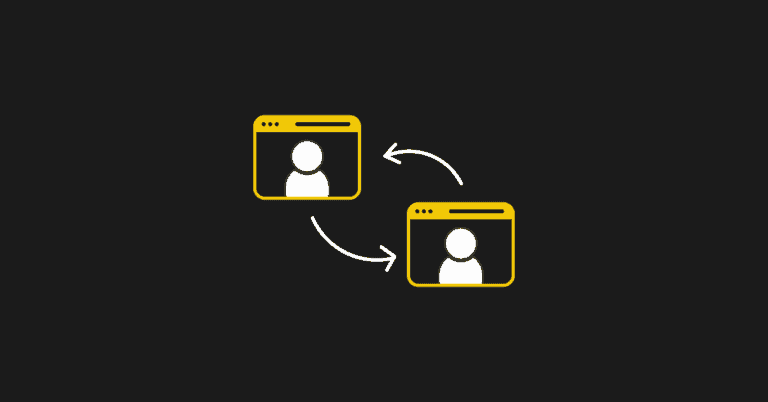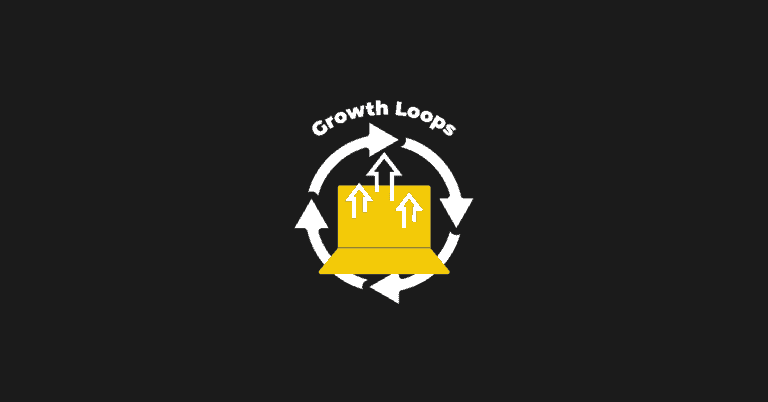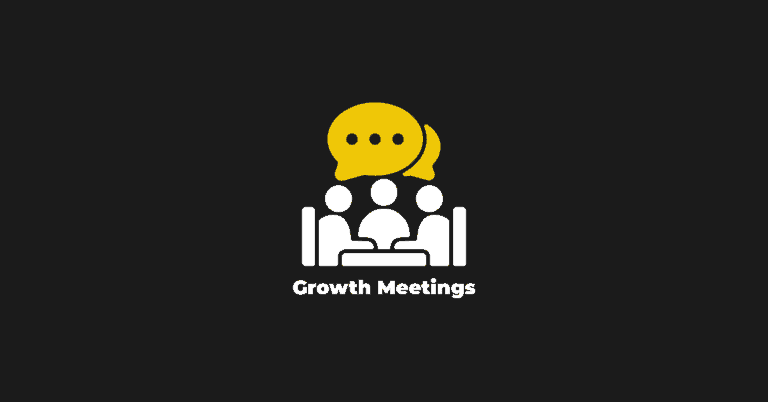As a SaaS company, your go-to-market strategy can be the difference between early success and floundering indefinitely.
More importantly, your go-to-market strategy is needed to define your target market, identify customer problems, create your messaging, and position your product in a position of strength. Without one, you’re more likely to slip up in one or more of these areas.
And if that happens, your path to success is much more challenging.
For example, a recent analysis of over 100 startups that shut down last year found that 42 percent didn’t solve a valid customer problem. With a go-to-market strategy, you’re less likely to make this mistake.
In this post, you’ll learn more about the finer details of creating a go-to-market strategy that powers your company from day one.
What is a Go-to-Market Strategy?
As defined by Cognism, “A go-to-market strategy is a plan that helps you define your ideal customers, coordinate your messaging, and position your product for launch. A GTM strategy also keeps key business units aligned on the same plan, allowing you to meet a market need and effectively iterate on your product.”
Who Needs a Go-to-Market Strategy?
The better question is, “Who doesn’t need a go-to-market strategy?”
Let’s make it easy: if you’re launching a new product or service, you need a go-to-market strategy to guide you. It’s that simple. There’s no way around it.
With this, you increase your odds of reaching the right audience and positioning your product correctly within the market.
The Story of Speedinvest
Speaking of premature growth, pushing too hard in the wrong direction is a mistake you can’t afford to make.
We started with the idea that Uber drivers were our target market. We spent time in London, hanging outside of Uber offices in an attempt to garner feedback.
Shortly after launch, we found that nobody was actually downloading and using the app. This was despite hearing positive feedback early on.
After a few weeks, it was clear we had the wrong target market. Luckily, we realized there were other options once we looked at the data. Our data showed that actors and entertainers were the biggest supporters of our product. Initially, we didn’t know that. We shifted our entire go-to-market strategy and products to focus on the entertainment industry.
And then suddenly, we saw exponential growth.
Remember this: growth is fuel, but you gotta have fire. You can't start a fire with wet wood.
The fire is finding that market.
What are the types of Go-to-Market Strategies?
One of the biggest hurdles in creating a go-to-market strategy is deciding which type is best for your product/service, business, and target market. It’s best to consider all your options to better the chance of selecting the right one.
Here are your five primary options:
- Product-led growth (PLG): A business strategy that relies on using your product as the primary method to acquire, activate, and retain customers.
- Inbound: An organic approach that relies on content marketing, social media, and search engine optimization (SEO).
- Sales enablement: A strategy based on providing sales professionals with the tools they need to succeed.
- Account-based marketing: A strong focus on B2B marketing with which sales and marketing teams combine efforts to drive interest.
- Demand generation: This strategy is a heavy dose of outbound sales via methods such as cold calling and email blasts.
Regardless of which strategy you choose, be sure to identify the following in it:
- Competitive demand
- Distribution
- Product market fit
- Target audience
The Danger of Premature Growth
The whole idea of premature growth is you've got to take it easy, you've got to take it slow. It's a marathon, not a race. You've got to think carefully about every step you take.
It's easy for founders to become hoodwinked. They don't know what's going on around them and they're just obsessed with getting sales, sales, sales.
And remember, growth for growth’s sake doesn’t always pan out. For example, just because you grow your social following or website traffic doesn’t mean that sales and revenue will follow.
If you start introducing PLG, or if you start trying to build growth funnels for a market that does not exist (or for the wrong market), then you're in a bad spot.
Here’s why: you’re doing all this work for people who aren’t going to use the product.
It all comes down to the traditional route that most people talk about: a solid go-to-market strategy. You must have this to understand what product-market fit means.
Where does product-led growth fit in?
It’s a great way to enable product-market fit, but it’s not a way to replace it.
There’s no replacement for a go-to-market strategy. The idea of a go-to-market strategy is to understand and find out who your market is and how to get your share.
What to Do After Finding Product-Market Fit
Finding product-market fit is a good start, but it’s only a start.
It’s essential to implement the right steps after that. This reduces the risk of all your upfront work going to waste. Let’s look at what you can do next.
Talk to Your Customers
It’s common among founders at early-stage companies to not talk to their customers enough – and that’s dangerous.
It’s my first recommendation.
Talk to as many customers or as many potential customers as you can. Then, do the research to validate that idea. Think about what that validation would look like, because with growth, it's all about creating a hypothesis and measurement of success. You will then test that hypothesis: does it fail, does it succeed?
And then finally, go in the direction the answers show you.
Verify Your Initial Thoughts
Here’s another story.
Last year, a company had the idea of building a new product.
They were sitting on the idea for a while, wondering if it had the potential to penetrate the market. The first question they asked was: which country is the best market for us?
To answer it, they created a landing page with a basic sign-up. From there, they ran Facebook ads with the idea that the European market would be their best fit. However, it turned out that the US market made more sense.
With the US market decided on, it was time to find the segmentation of users who were interested. What are the users’ age, location, gender, and interests?
They then matched the data to how many people signed up to their mailing list for their pre-product idea. The results were amazing. They were getting leads for a couple of cents. This made it clear that there was a market for the product.
Then it came down to whether people would actually pay for it. They knew there was an element of product-market fit, but next it was all about economic fit.
They created a fake Stripe page just to see if people would open their wallets and pay. Soon enough, people were trying to pay for it. This really proved they were on to something.
Yes, this was a lot of work upfront. But in the end, they were able to raise $50,000 on Kickstarter because of the work they put in.
How to Bring Your Product to Market
The craziest misconception about a go-to-market strategy is that you execute it and once you’re done, you’re done. That’s far from the case.
Break down your go-to-market strategy for each segment you're going for.
For example, Facebook. Their go-to-market strategy was simple: let's get one university on board, then a second university. Let's get a group of universities on. Let's get all the US universities on.
In each step, there was essentially a new go-to-market strategy. That's the way you need to think about it. It's not "we're gonna take over America." We're gonna take over university by university.
Common Go-To-Market Strategy Mistakes Companies Make
Making mistakes is part of the game. Even if you have a well-defined go-to-market strategy, there’s no guarantee that you’ll do everything right. A lot of it depends on the circumstances surrounding your company.
For example, as an investor, all we care about is how we get more money and how we can take you to the next round. We try to do that as successfully as we can, but this pressure on a founder can lead to the approach of "let's just make more sales.” Unfortunately, more sales don't necessarily mean more success.
You might be able to sell something well, but what do the turnover rates look like? Do you see the problem?
On the other hand, businesses try to expand their market reach to get more sales because they think "If we can get 5% of a pool of half a million people, that's a lot more money than getting 50% of a small pool of like a thousand people."
But the question is this: How many people are happy?
Essentially, that’s what you're looking for. Figure out how you can deliver on that value.
How to fine-tune your GTM strategy and audience segmentation
This goes along with the section above on mistakes. You’ll misstep now and then. You can either continue down the wrong path or fine-tune your strategy with a better future in mind.
Audience segmentation, for instance, is one of the better ways to fine-tune your go-to-market strategy.
There are a lot of differences. It can be city by city, region by region, by state, or by country.
For example, if you're looking at products that are going to different countries, people have different representations of color, and their color schemes can change.

The most successful companies, regardless of industry, are the ones with great product-market fit. They hit the nail on the head. Maybe this wasn’t the case out of the gate, but they eventually found their way.
Example: Airbnb
A great example is Airbnb in 2020. They had amazing product-market fit until suddenly, no one could go anywhere. So what did they do? They rolled with the punches. They needed to change what they were actually doing and what their value proposition was.
Suddenly, Airbnb had these little tiny pivots and tweaks from "go away and stay with your family on a vacation somewhere" to "work remotely." The whole value proposition changed from taking a vacation while working remotely.
They were able to alter their marketing strategy as the world, and their audience’s needs evolved, allowing them to remain an industry leader.
The Most Important Step Before Launching Your Product
The best step you can take before launching your product is to analyze data or hire an expert to do so on your behalf. Either way, the data you gather is useful in making adjustments to your strategy before you’re in too deep.
The best thing I ever did before launching a product was to hire a business intelligence analyst (BI) for a couple of weeks before launch. He helped us map out all the different events—the user journey from our first product launch.
That paid so many dividends down the line.
Make sure you have all your tracking and analytics in place.
If you're still in the early stages, hire a BI person for a few weeks. It will make all the difference because it's easy to track. There's this whole idea of analysis paralysis. If you start tracking everything, you don't know where to start.
A BI team will help you understand the data and create an actionable plan from it.
Imagine an orchestra with 200 musicians. Sure, you could tell them all to “play music” and hope for the best. But they’re not going to make music.
Your other option is to provide sheet music — which in your case is the user journey — and ask them to play from that. All the instruments come together to make beautiful music, just as metrics and data points mesh to help you understand what’s happening.
So, think of your data as an orchestra. Make sure you have it all lined up.
Learn More About Product-Led Growth and Go-to-Market Strategies
So, there you have it. There should be no question in your mind as to why it’s critical to fine-tune your go-to-market strategy. When you take the right approach, avoid costly mistakes, and learn from those who have come before you, your chance of success skyrockets.
To learn more about product-led growth as a go-to-market strategy, be sure to sign up for our free Product-Led Growth Fundamentals training to learn how impactful it can be for your business.









